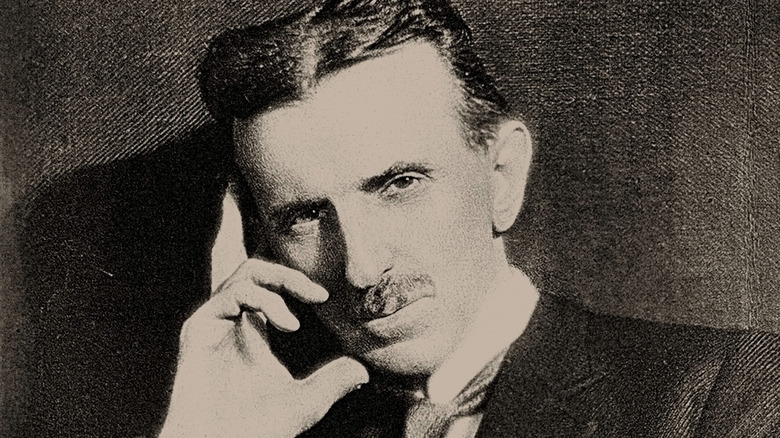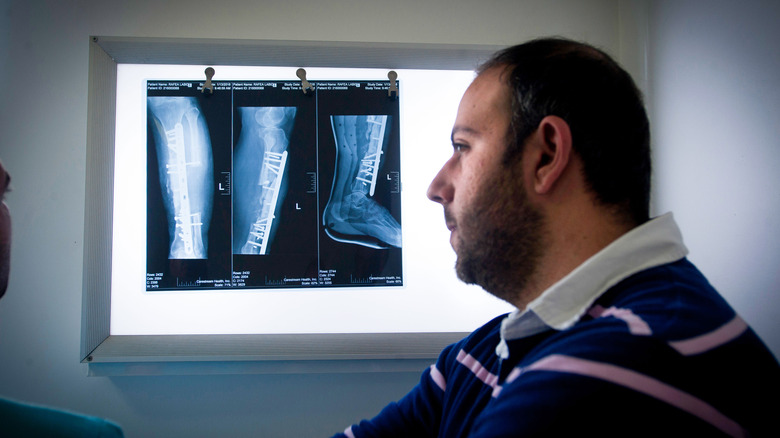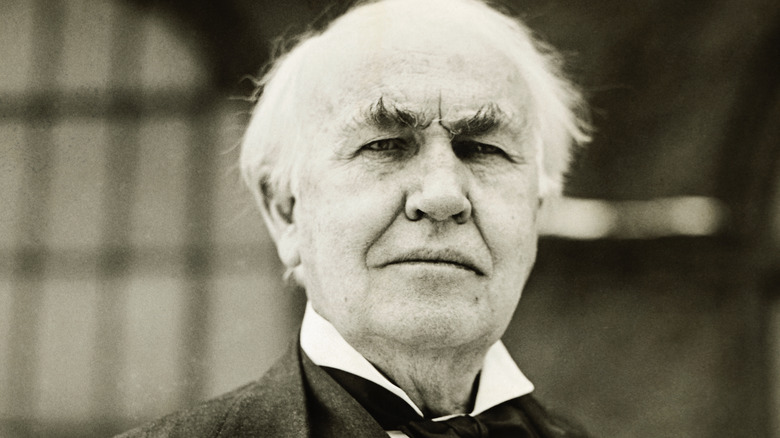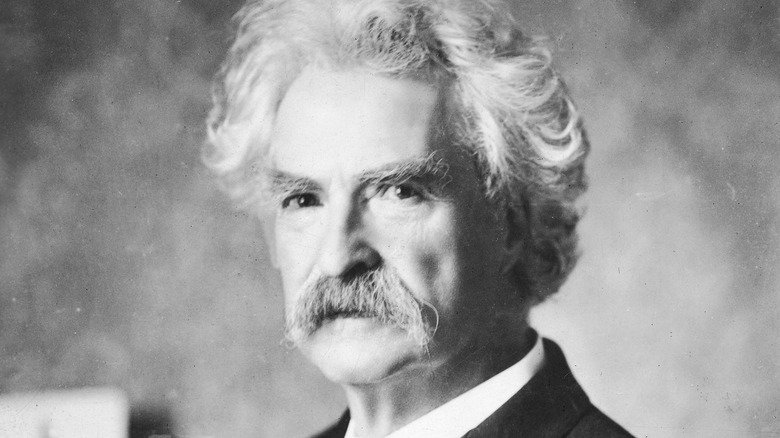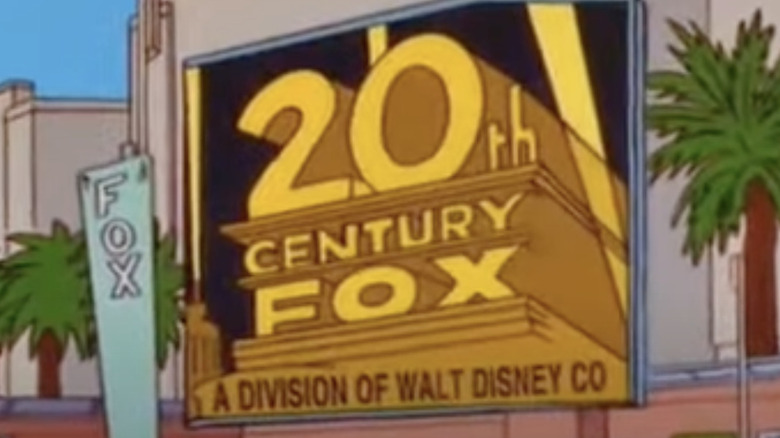20th-Century Predictions That Actually Came True
For better or for worse, the 20th century went down as one of the most fruitful periods of boldly predicting future events. Perhaps it was because of the exciting new technologies so frequently introduced, or maybe it was because of all the frightening major wars and destructive diseases. At any rate, both the optimistic futurism and foreboding sense of doom led the philosophers of the 1900s to try to make some sense of what was yet to come for the human race.
Predicting the future is fun to do, and fun to read, and publishers and media gatekeepers of the 20th century happily obliged the self-appointed psychics and mental time-travelers. Many of the top minds and writers of the age exploited their own stellar reputations and track records as innovators to get their ideas and prophecies about the future widely seen and widely read. But the truly fascinating aspect of all of it: Sometimes, and surprisingly often it would seem, the predictors were spot-on correct about their ideas and visions of life in the late 1900s and early 2000s.
Nikola Tesla foresaw the rise of gym class and large-scale water pollution
While known for his breakthroughs in engineering and technology — he's responsible for AC electricity, radio, and the induction motor — Nikola Tesla also liked to speculate about what life on Earth may look like by the end of the 20th century and a little bit beyond. In a February 1935 article for Liberty Magazine called "A Machine to End War" (via Hello Earth), Tesla let loose with his predictions of the shape of life to come. "Hygiene, physical culture will be recognized branches of education and government," Tesla wrote, predicting a presidential cabinet-level position for "the Secretary of Hygiene or Physical Culture." In 1953, the federal government established the Department of Health, Education, and Welfare, now known as the Department of Health and Human Services, and its director serves in the president's cabinet. Tesla had also correctly speculated that health and physical education classes would someday be compulsory subjects in public schools. In the 21st century, most states require gym and health classes at all levels.
Tesla also correctly guessed, at a time when the Industrial Revolution was winding down, that pollution caused by new, modern methods of production would prove deadly. "More people die or grow sick from polluted water than from coffee, tea, tobacco, and other stimulants," Tesla wrote. Today, about 1.4 million people die from consuming polluted water annually. That trails the 8 million annual tobacco-related deaths, but Tesla at least tried to give a warning.
Nikola Tesla described the smartphone in 1926
Modern-day smartphones offer users a variety of methods by which they can communicate instantaneously with others around the world. The average iPhone can handle traditional voice calls or transmit and receive direct video via applications like FaceTime, Zoom, and Skype, all without any wires, cords, or tethers to communication systems or external electricity sources. All that computing power occurs inside of a tiny, thin brick that slides comfortably into a pocket.
In both form and function, the 21st-century's battery-powered, network-reliant smartphone closely fits the vision proposed by inventor Nikola Tesla in an interview that appeared in an issue of Colliers in January 1926. "When wireless is perfectly applied the whole earth will be converted into a huge brain, which in fact it is, all things being particles of a real and rhythmic whole," Tesla said (via Twenty-First Century Books). "We shall be able to communicate with one another instantly, irrespective of distance. Not only this, but through television and telephony we shall see and hear one another as perfectly as though we were face to face." The devices capable of such tasks, Tesla said, would be rather small: "A man will be able to carry one in his vest pocket."
A 1967 promo film nailed online shopping, electronic banking, and GMOs
In 1967, appliance manufacturer Philco-Ford commissioned the short film "1999 A.D." The 26-minute piece chronicles day-to-day life in an imagined home in the year 1999. One character, Michael Shore, works in the botany department of a Mars colonization project, developing food that will yield more calories and prove hardy. "His experiments will produce a giant peach, with a thick protective skin much like that of a tangerine," the narrator explains, foretelling the rise of genetically modified foods. The film shows Shore working at his electronic workstation, outfitted with an electronic screen that he can use to view images of the cellular structure of plants — technology reflected today in digital photography and touchscreens.
According to the correctively predictive film, the computer will be the "secretary, librarian, banker, teacher, medical technician, bridge partner, and all-around servant in this house of tomorrow." Case in point: Wife and mother Karen Shore uses a computer terminal for online shopping, flipping through images of products available at a distant store and then buying the item she wants via push-button technology. A purchase on this proto-Amazon.com is paid for by electronically debiting the Shore family's bank account.
A magazine writer said Americans were about to get significantly taller
The theory of evolution, as suggested by Charles Darwin in "On the Origin of Species," shows how the physical appearance, abilities, and structures of living things change over thousands of years. In a 1900 essay for the household hints magazine The Ladies' Home Journal, prolific freelance feature writer John Elfreth Watkins Jr. shared the idea that humans would continue to evolve, at least in terms of one very specific area. "The Americans will be taller by from one to two inches," Watkins wrote in "What May Happen in the Next Hundred Years." "His increase of stature will result from better health, due to vast reforms in medicine, sanitation, food, and athletics."
Around the time that Watkins published his article, the average adult American man stood 5 feet 7 inches, and the average adult American woman measured 5 feet 3 inches. Today, American males stand about 5 feet 10 inches and women at 5 feet 4 inches. The average height for guys increased by three inches, more than Watkins' suggestion, while women are an inch taller, which was exactly the author's prediction. The major factor that accounts for the growth: "better health," as Watkins had said. Specifically, regular and moderate childhood consumption of protein, calcium, and vitamins A and D are primary contributors.
A reporter talked about digital photography in 1900
In his 1900 article "What May Happen in the Next Hundred Years" for The Ladies' Home Journal, John Elfreth Watkins Jr. categorized his predictions as not his own but rather "prophecies" that he received by consulting "the most learned and conservative minds in America." One such educated speculation covered the way that photographs would be captured and distributed 100 years in the future. In doing so, Watkins and his unnamed source saw the development of digital photography and instantaneous distribution.
"If there be a battle in China a hundred years hence snapshots of its most striking events will be published in the newspapers an hour later," Watkins wrote, describing uncannily how smartphone cameras and the internet of the 21st century can be used to obtain and then share pictures globally and instantly via media outlets. "Photographs will reproduce all of Nature's colors," Watkins added, foreseeing the rise of ultra-high resolution digital photo-taking.
X-ray technology and machines were predicted in 1900
John Elfreth Watkins' 1900 article in The Ladies Home Journal offers a breadth of predictions for the decades to come. In addition to predicting a change in human biology and new developments in consumer goods and communications methods, Watkins described in what would be impressively accurate detail the operation and purpose of medical technology.
"Microscopes will lay bare the vital organs, through the living flesh, or men and animals," Watkins wrote. "Not only will it be possible for a physician to actually see a living, throbbing heart inside a chest, but he will be able to magnify and photograph any part of it." In those few sentences, Watkins casually laid out the now commonplace use of medical imaging machinery, such as CT scanners, MRI machines, and X-ray terminals. "This work will be done with rays of invisible light," Watkins explained accurately if simply.
Thomas Edison laid out the future of trains and planes
As a prolific inventor and possessor of more than 1,000 patents, Thomas Edison helped shape the day-to-day life of people living in the 20th century and beyond. His expertise in future tech solidified with his involvement in the creation of the phonograph, motion picture cameras, and a rudimentary tattoo gun. Edison sat for an interview with the Miami Metropolis, published on June 20, 1911 (via Paleofuture), where he described the myriad treasures and changes that awaited the human race.
Edison was particularly astute on transportation matters. Predicting the imminent demise of steam engine-powered locomotives, Edison believed that in 100 years' time, trains would run on electricity, but that the average tourist would dismiss high-speed rail travel in favor of sophisticated airplanes that would fly at speeds upwards of two hundred miles an hour.
How correct was Edison? Rail lines started to phase out steam engine trains in the 1920s, so he was dead-on from his 1911 perspective. Further, electric trains first went into mainstream operation in Europe in the 1910s, with that method of power used in a third of the world's railway systems by the 2010s. As for the airplanes, Edison was correct about large, commercial airplanes but not about their speed. Transcontinental commercial jet airliners fly in excess of 500 miles per hour on average, much speedier than Edison's lofty prediction.
H.G. Wells warned of atomic bombs 30 years before they existed
Twentieth-century global geopolitics was shaped by the threat of atomic warfare, like the mutually assured destruction of the United States and U.S.S.R. dropping nuclear bombs on one another. The world had already gotten a glimpse at the extreme horror of atomic bombs and their devastating ability to wipe out whole cities when the U.S. dropped them on Hiroshima and Nagasaki in Japan at the end of World War II. Ominously and remarkably, the atomic bomb — how one worked, what an explosion of one looked like, and the can't-be-topped destruction it caused — was foretold in H.G. Wells' 1914 novel "The World Set Free."
The book posits a world in which atomic science could be used to generate endless energy — like nuclear power — or make fearsome weapons of untold might. "We have a source of power so potent that a man might carry in his hand the energy to light a city for a year, fight a fleet of battleships, or drive one of our giant liners across the Atlantic," Wells wrote before describing the process of handlers in a plane dropping atomic explosives onto cities. "The bomb flashed blinding scarlet in mid-air, and fell, a descending column of blaze eddying spirally in the midst of a whirlwind," Wells imagined, before writing of such atomic bombs as they'd later be considered: "the crowning triumph of military science, the ultimate explosive that was to give the 'decisive touch' to war."
Arthur C. Clarke's 2001 described the iPad
Arthur C. Clarke predicted and described the look and mechanics of space travel with his 1968 science-fiction novel "2001: A Space Odyssey." He also showed how people 30-plus years into the future would use advanced technology to acquire information and kill time when they're bored. Scientific specialist Dr. Heywood Floyd takes a work trip to a moon base, and he's left with plenty of free time while he's up there. "When he tired of official reports and memoranda and minutes," Clarke wrote, "he would plug his foolscap-sized Newspad into the ship's information circuit and scan the latest reports from Earth." A foolscap is a sheet of typing paper, meaning the Newspad that Clarke describes is of those dimensions, roughly similar to that of a contemporary, real-world Apple iPad.
That tablet computer allows instant access to constantly updated information from long-extant news sources leftover from the print media era, much like the newspaper feeds Dr. Floyd can view via the Newspad. "One by one he would conjure up the world's major electronic papers," Clarke wrote. "That very word 'newspaper,' of course, was an anachronistic hangover into the age of electronics."
Mark Twain predicted his own death
Samuel Clemens, a.k.a. Mark Twain, is among the United States' literary giants. After beginning his career as a reporter, Twain wrote all kinds of popular things, from classic novels like "The Adventures of Tom Sawyer," "Adventures of Huckleberry Finn," "The Prince and the Pauper," and short stories and humor pieces. Twain was known for his quips, like in 1909 when he reflected on the unique cosmic circumstances of his birth. "I came in with Halley's Comet in 1835. It is coming again next year, and I expect to go out with it. It will be the greatest disappointment of my life if I don't go out with Halley's Comet," Twain said (via "Mark Twain: A Biography").
That comet streaks through the Milky Way-adjacent every of space, and is visible on Earth on average every 76 years. Twain was born in a Halley's Comet year, and, exactly as he'd predicted, he passed in one, too. Twain died at age 74 in 1910.
The Simpsons knew that Fox and Disney would merge
Before it was a standalone series, "The Simpsons" originated as animated vignettes on "The Tracey Ullman Show" in 1987, one of the first shows on the Fox Network. Ever since, the series has frequently made fun of its broadcaster and parent company. Another example: the 1998 episode "When You Dish Upon a Star" mocks Hollywood movie stars and features a quick visual gag showing the outside of 20th Century Fox studios. A sign indicates the company has become "A Division of Walt Disney Co."
About 20 years later, that joke from "The Simpsons" wasn't a joke anymore. In 2019, The Walt Disney Company purchased the Fox entertainment conglomerate. With a closing price of $71.3 billion, it gave Disney control of all of Fox's film production arms, as well as the Fox Network, which includes "The Simpsons."
A high school student predicted the Chicago Cubs' World Series win
The Chicago Cubs once held the dubious record of longest time without winning a championship — not just for Major League Baseball, but for all of the major North American professional team sports. The Cubs won the World Series in 1908, and then over the next century-plus, made it into that championship round seven more times, losing all of them. Finally, in 2016, and overcoming a supposed curse placed on the team in 1945 by an irate Chicago bar owner who wasn't allowed to bring his pet goat to a game, the Cubs defeated Cleveland 8 to 7 in 10 innings in Game 7 of the World Series, ending its title drought.
The Cubs had gone so long without winning it all that to predict the team ever doing so, and when, would be little more than a hopeful guess. But a high school student got it right, more than two decades before it actually happened. Mike Lee graduated from Mission Viejo High School in 1993. His senior quote that accompanied his photo in the yearbook, according to CBS News: "Chicago Cubs. 2016. World Champions. You heard it here first." The prediction went viral shortly after the Cubs won the 2016 World Series, as Lee predicted, thanks to his old classmate Marcos Meza sending Lee's photo to various sports blogs.
A 1987 sitcom predicted a world leader's death
Fox debuted as the fourth American broadcast TV network in 1987. In its first year, Fox aired a sitcom called "Boys Will Be Boys," starring Kiel Martin as Charles Russell, a dead man permitted by St. Peter to atone for his life of bad behavior by going back in time to put his teenage self (Matthew Perry) on a wholesome path. The show's first episode includes several scenes in Heaven, with St. Peter deciding on the afterlife fates of the recently departed, including Charles, and Libyan dictator Muammar Gaddafi. St. Peter sends Gaddafi to hell, where he'll endure an eternity as a constantly exploding bomb.
An on-screen graphic tells "Boys Will Be Boys" viewers that the scene takes place on July 29, 2011. That means in the world of this show, Gaddafi died on July 29, 2011. In real life, about 23 years after the sitcom episode aired, Gaddafi was overthrown, detained, and executed on October 20, 2011, with the sitcom accurately predicting the year.

